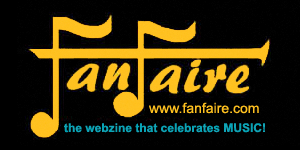by Brenda Murphy
Is there a best way to play the music of Vivaldi? Or baroque music in general? If so, what would that be?
Each of the well-known Italian ensembles specializing in the music of Vivaldi (such as i Musici Veneziani, Europa Galante, and I Solisti Veneti) has a signature performance style, determined by a leader and by which a listener can readily identify the group. But is there a single correct way to play this music? The Interpreti Veneziani, an ensemble based in Venice, offers a unique solution.
The problem facing today’s performers of baroque music is that no one knows exactly how the compositions of Vivaldi or other 18th-century composers were performed, or how they really sounded. There are many variables. To wit…
The Size of the Ensemble
Although today Vivaldi’s music is most often played by a chamber ensemble of modest size, the performing group of Vivaldi’s time varied. The size and configuration of the ensemble depended on the event, the venue, and who was available to play. For example, for a composition celebrating an important festival such as the Solennità di Maria Vergine, Vivaldi employed a double orchestra, with as many as 100 musicians. By contrast, lesser occasions were better served by compositions intended for much smaller ensembles. Vivaldi often adjusted not only the size of the ensemble but the instrumentation as well.
The Style of Performance
When these works were written, there was no indication in the score as to how they were to be played, the standard practice being to leave such decisions to the discretion of the musicians. Whether or not violinists of the era used vibrato, for example, has been hotly debated for decades.
The many violin concerti Vivaldi wrote (around 250) were composed for diverse occasions: for the court, for church festivals, for private gatherings, or for his young students in the Pietà. Because each composition had a particular purpose, Vivaldi was required to write in a manner suited to the event. Add to that the individual style of the soloist, and the reality of the performance is further obscured.
The Instruments
Young Man With Violin by Jan Kupetzky, 1710
Unlike the fairly standard look of instruments today, instruments in Vivaldi’s time varied in size, shape, and construction. Violins made by different artisans, in different regions, had distinctively different shapes. Violin strings, what they were made of and their relative tension, were not like those in use today. Violin bows varied in length and shape, and the chinrest was unknown as was the shoulder rest.
Even how an instrument was held must have affected the way it was played and sounded. In paintings from the 18th century we can see the violin held against the front of the body, instead of on the shoulder.
All of these factors — the size of the ensemble, the event for which the work was composed, and the instruments — influenced how Vivaldi’s music was performed. There was undoubtedly more diversity in the interpretations of music in the 18th-century than we may have imagined.
A Different Direction
A different approach to performing the music of Vivaldi today is that of the Interpreti Veneziani, an ensemble without a leader. Each of the musicians in this ensemble is an individual interpreter of the mostly-baroque music in the group’s extensive repertoire. There’s no single style of interpretation, but a variety provided by the individual talents of the musicians, each with his own distinctive style. Hence the group’s title.
In the Interpreti Veneziani, the soloist for a piece becomes the leader and provides direction as to the character and color of the performance. Decisions about tempo, phrasing, dynamics, and even bowings rest entirely with him.
Just as no opera singer is able to sing every style of opera, choosing instead the works best suited to his voice, so the musicians of the Interpreti Veneziani choose the pieces best suited to their particular performing styles. The result is that Interpreti Veneziani performances have a wide range of stylistic color, from romantic, to virtuosic, to humorous and beyond, meaning that the same piece played by one soloist today and another tomorrow may sound quite different.
About the Interpreti Veneziani
A significant difference between the Interpreti Veneziani and other baroque ensembles is that their concert season never ends. Performing most nights of the week, year round, the ensemble presents well over 300 concerts a year in their home base, the Chiesa di San Vidal in Venice, reaching an annual of audience of over 70,000. Even as their concert schedule continues in Venice, the ensemble has several tours each year, bringing the music of Venice to audiences in Asia, Europe, Australia, Canada, and the Americas.
The Interpreti Veneziani comprises 19 Venetian musicians — 11 violinists, 2 violists, 2 cellists, 2 double bassists, 2 harpsichordists — with the performing group consisting of 8 members: 4 violins, a viola, a cello, a double bass, and harpsichord. Individual musicians are circulated in and out of the performing ensemble according to the pieces being played and scheduling considerations. In this way the Interpreti Veneziani can continue giving performances in Venice even while other members of the group are on tour.
A Best Way?
Returning to the initial question, it may not be possible to determine a single “best” way to play the music of Vivaldi, but today’s performances can explore his music using the expressive capabilities of the instruments and musicians of our own age. With style and passion, the Interpreti Veneziani are doing just that. The variability of this particular group may actually capture the reality of performance in Vivaldi’s time more accurately than the other groups, each of which offers only a limited slice of possibilities
For more information on the Interpreti Veneziani and their CDs, visit www.interpretiveneziani.com
_______________________________
Brenda Murphy, MM in musicology (Manhattan School of Music) and PhD in Education & Arts Professions (New York University) is currently Associate Professor of Education at Shenandoah University in Virginia.



